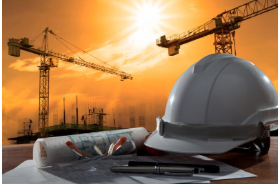 Author: Richard DiNitto Working on a roof can be a dangerous activity and is often considered part of an overall Fall Protection Program. Fall protection is one of the most commonly cited violations by the Occupational Health and Safety Administration (OSHA). Nearly 900 people die annually in the US from falls from a roof. Care in how you perform roof work is critical to your overall safety programs. Within the US, OSHA establishes requirements for roof work under Rule 1910.28 Duty to have fall protection and falling object protection. Rule 1910.28 establishes that an employer must ensure that each employee on a walking-working surface (such as a roof in this case) with an unprotected side or edge that is 4 feet (1.2 m) or more (for general industry or 6 feet or more for construction work) above a lower level is protected from falling by one or more of several specified control measures:
Under the Rule, the distance from the edges of the roof dictates which systems must be in place and what allowances may be acceptable:
A Designated Area is defined by OSHA as "A distinct portion of a walking-working surface delineated by a warning line in which employees may perform work without additional fall protection."
These exceptions for using a designated area or not having to enforce a fall protection plan requires that the work is both temporary and infrequent. These terms are defined as:
As with any work activity that has inherit risks and safety concerns, a proper hazard evaluation or risk assessment to determine the best and safest approach is warranted. While the information provided above is a good overview and guidance for safe work on a roof, the regulatory rules cover additional parameters and issues that you need to consider in your roof work evaluations and program. Consultation with roof safety experts is strongly recommended. The Isosceles Group is retained to develop, implement and maintain Occupational Health & Safety (OHS) and Environmental Management Systems (EMS) at industrial and commercial facilities. It also manages various EHS issues that affect the operation and expansion of such facilities. If you would like The Isosceles Group to assist with EHS management at your facility, please contact Richard DiNitto at [email protected] or (617) 330-2800. Comments are closed.
|
Search Facility Management BlogBrowse Archives
November 2019
|

 RSS Feed
RSS Feed
